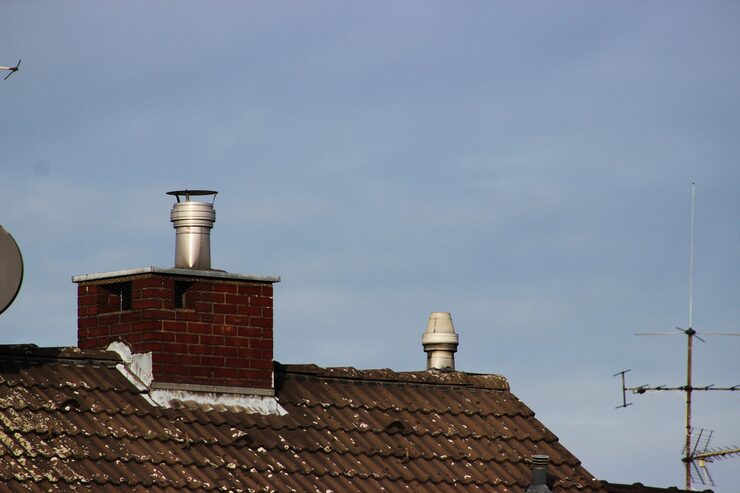A chimney communicates its distress through very specific visual cues that homeowners must learn to recognize. These signs, such as spalling bricks or efflorescence, are not merely cosmetic flaws. They are urgent warnings of deep-seated moisture intrusion and structural weakness.
Ignoring these visible symptoms can lead to rapidly accelerating deterioration, safety hazards, and catastrophic leaks into the home. Learning to decode these signs helps homeowners call for a professional assessment at the earliest possible stage. Timely action is the key to minimizing repair costs.
Decoding Masonry Distress Signals
The primary cause of almost all masonry failure is water infiltration. When water is absorbed into the porous brickwork, the subsequent freeze-thaw cycles cause destruction. Understanding the resulting damage is crucial for making the correct chimney repair decision.
Spalling Bricks
Spalling occurs when water trapped inside a brick freezes and expands, forcing the face of the brick to pop off or flake away. This leaves the inner, softer material exposed and highly vulnerable to further decay. Widespread spalling often signals a need for a partial rebuild.
Spalled bricks compromise the chimney’s strength and must be removed and replaced by a skilled mason. This is a critical form of chimney repair that prevents the structural damage from migrating further down the stack.
Mortar Failure: The Need for Repoint
The mortar is designed to absorb the environmental damage, acting as a sacrificial element for the harder bricks. When the mortar begins to crumble, crack, or erode deeply, the bricks are next in line for damage. This deterioration demands immediate attention.
When to Schedule Chimney Repoint
If the mortar joints have visible gaps, appear sandy, or are receding significantly, a chimney repoint is necessary. Repointing removes the damaged material and replaces it with fresh mortar, sealing the structure against moisture. This restores the chimney’s primary water defense.
Failing to repoint allows water to penetrate the system, potentially leading to rust on metal components like the damper or firebox. Rust and water damage inside the chimney are often direct results of external mortar failure.
Interior Clues: Stains and Drafts
Damage is not confined to the exterior; water intrusion manifests inside the home as well. Look for water stains or damp patches on the ceiling and walls surrounding the chimney breast. These are indisputable signs of an active leak from the roof joint or the masonry itself.
Efflorescence and Cracks
Efflorescence, the white, chalky deposit on the exterior bricks, is conclusive evidence that water is moving through the masonry structure. It shows that the entire stack is saturated. This demands a thorough inspection and usually corrective chimney repoint work.
Cracks on the visible chimney stack, particularly those in a stepped pattern, indicate foundation or structural shifting. A leaning chimney, even slightly, is an immediate safety concern that requires an expert structural assessment and professional chimney repair.
Calling the Masonry Experts
Any sign of chimney distress—spalling, efflorescence, or a significant crack—warrants calling a licensed masonry professional. Do not attempt DIY fixes like superficial patching or caulking, which trap moisture and accelerate internal damage.
An experienced, long-standing contractor will diagnose the specific cause and recommend the exact service needed. Whether it’s targeted repointing or a complete section rebuild, professional expertise ensures a lasting and safe solution for your home.
Conclusion
Your chimney provides clear warnings when its integrity is compromised through signs like spalling bricks and crumbling mortar. Heeding these warnings by scheduling a professional assessment is vital. Promptly addressing issues with certified chimney repoint or structural chimney repair ensures the safety, function, and longevity of your entire heating system.
